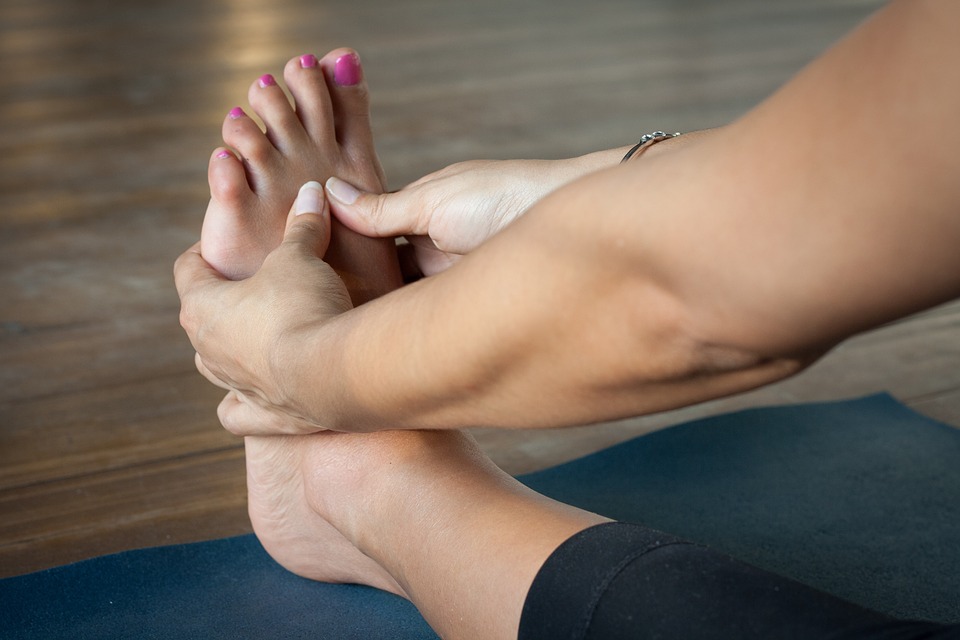Do This at Home: Mobilizing the Spine
A frequent complaint: lack of mobility in the spine
While the upper and lower segments of the spine are designated regions of stability, the middle region, also known as the thoracic spine, is designated as a mobile region. The spinal motion segments in this part of the back are specially engineered for rotation, flexion and extension. In the sense of your spine, movement begets mobility; you need to keep your spine mobile to maintain its mobility. Thoracic spinal mobility has important implications in the functioning of the upper and lower body, and thus maintaining its mobility is of vital importance. Unfortunately, many of the people we help at Holmes Chiropractic come in and exhibit signs of poor mobility in the spine. Poor spinal mobility affects us in myriad ways:
- Restricted range of motion
- Uneven development of supporting musculature
- Lack of coordination between moving parts of the body
- Communication breakdown along a vital pathway of the nervous system
Stop Waiting for Health Problems to Catch Up With You!
2018 is the year to proactively fight for your health
Many of us enter each new year with nagging concerns over our health- a sore back, a growing midsection, more fatigue, less happiness. Each new year, we resolve to do something about it and for a month or so we hold on to this vague newfangled desire for something better. Yet after a few months our resolve weakens and we slip into the same patterns and habits that let us down in the first place. So what’s going to change this year? Having help on your side. Read on to find out how Holmes Chiropractic is your ally in wellness.
2018 Energy Equation: More H2O, Less Caffeine
How bad do you really need caffeine?
Here’s a classic paradox of American society: while some health experts estimate that as many as 75% of Americans are chronically dehydrated, caffeine consumption is on the rise. We are literally ignorning the one ingredient that nourishes every cell in our body while consistently stimulating our central nervous system with a psychoactive drug. In other words, we are ignoring natural energy and choosing fabricated energy. And the list of side-effects that caffeine consumption continues to grow:
- Contributes to sleep disorders
- Stomach irritation
- Headaches due to dependency
- Restlessness, nervousness and anxiety
- Can worsen symptoms of a number of conditions including diabetes, epilepsy and glaucoma
- Contributes to acclerated bone loss by increasing the amount of calcium that is disposed of through urine.
The fact is that everyone’s body interacts with caffeine differently. And while only you know if you are drinking too much caffeine on a daily basis, it is worth asking if you are drinking enough water. H2O, when properly consumed, can also boost energy and may actually help you perform even better than caffeine.
Carpal Tunnel Syndrome: Prevention Techinques
Carpal tunnel is a workplace concern
Carpal tunnel is classic repetitive strain. Office workers spend a significant percentage of their life in front of computers; often the only active parts of the body are the hands and fingers. As more jobs shift into white-collar office scenarios, it’s conceivable that this problem will grow unless we take preventative action. Already, as much as 5% of the working population is thought to suffer from carpal tunnel syndrome.
Learning to Listen to your Body Again
How easy is your body to ignore?
Drinking water, stretching regularly, remembering to exercise; in this busy world of ours, our healthy habits are often the first to fly out the window. Our smart phones, in the interest of optimizing our lives, notify us when it’s time to take a break from the computer, replenish our hydration or get up and stretch; it can lead us in these activities and keep track of our progress. In short, we can absolve ourselves of the responsibility of listening to our bodies. But the question is, if you were already ignoring your body to begin with, can’t you just as easily ignore a cell phone?
Lessening the Stress of the Holiday Season
How we become spun out in time for Christmas dinner
The formula feels familiar: myriad holiday parties, marathon baking and cooking sessions, christmas shopping to fit in wherever; all of this on top of your already hectic work and home schedule. Forget exercise or diet, you are just trying to keep one step ahead of being completely burnt out. The holiday season has a way of turning up the stress that no other season can really lay claim to; if you are susceptible to this cycle, read on to find out how chiropractic can help balance body and mind this holiday season.
When Christmas Time Puts your Back at Risk
Holidays and back pain go together
Below we have brainstormed a quick list of Christmas-specific risk factors for your spine:
- The tree: everything from cutting it to setting it up and adorning it with ornaments. Trees are heavy! Take care to use proper form when lifting and moving.
- The shopping: stress leads to muscle tension; tight muscles pull your spine out of alignment.
- The lifting of young relatives: any lifting motions should be performed with care.
- The sitting around: lack of activity is a cardinal threat to your spinal health.
- The consumption of booze and other inflammatory ingredients
Holiday Indulgence without Sacrificing your Fitness Gains
Go ahead and indulge this holiday season
Indulging is good for the soul; a single slice of pie can bring a measure of happiness that is hard to find elsewhere. But there is such a thing as diminishing returns on each consecutive slice of pie. And while overindulgence is symptomatic of the holiday season, it is always worth keeping things in perspective when it comes to your physical fitness. At Holmes Chiropractic, we are in the business of body balance- and the holiday season is a consistent challenge for the fitness of our patients. Here are some friendly holiday reminders from your chiropractor.
Carrying Your Whole Life on Your Back: How Backpacks Affect Spinal Health
Your bag is your life- make sure it isn’t killing you
Messenger bags, gym bags, huge purses, briefcases; a single unit for carrying your personal belongings is a vital component of keeping your life together throughout the day. However, we rarely put any thought into the type of bag we use or how we carry it until it is causing us back pain. When it comes to selecting a pack, functionality should be the primary consideration, not fashion. To prevent problems from developing, take a few seconds to analyze your posture when you are carrying your bag.
- Do you lean forward or slump to one side to support the weight?
- Do you struggle to get your pack on or off
- Does your back pain increaes while carrying your bag?
These simple questions are even more important for our children, who carry a bag back and forth to school every day. The developing spine is susceptible to the added pressure of a heavy backpack. The extra compression of the pack can cause changes in the curvature of a developing spine and lead to pain in the back, neck and shoulder.
Saying Goodbye to Sciatica in Houston
Why wait so long to do something about your sciatica?
The most effective way to overcome sciatica is to do something about it the second you suspect you are suffering. The earlier we catch and detect the problem, the easier it is for our action plan to address and solve the underlying problem. Letting sciatica symptoms linger, hoping they will get better by themselves, can lead you down a road of further complications as the problems compound.


